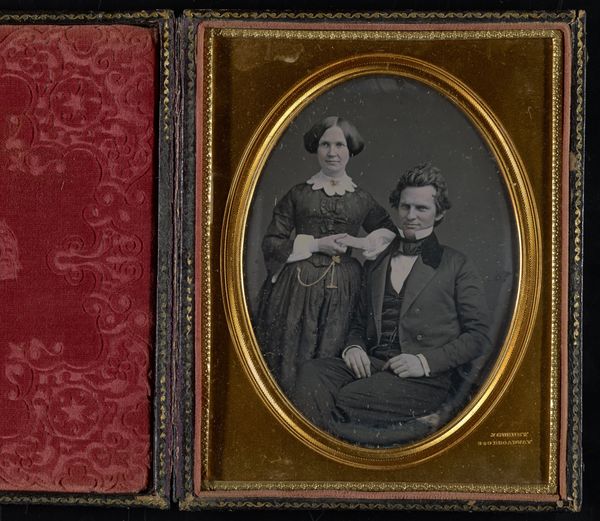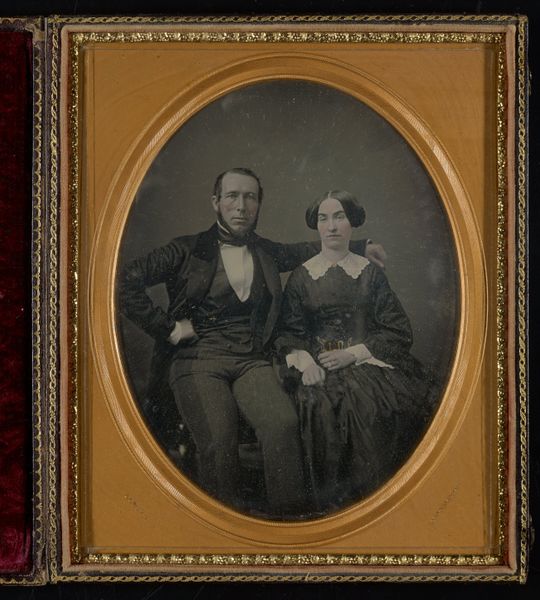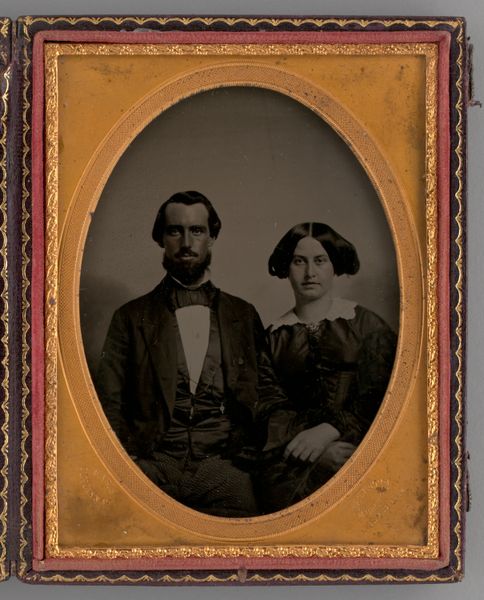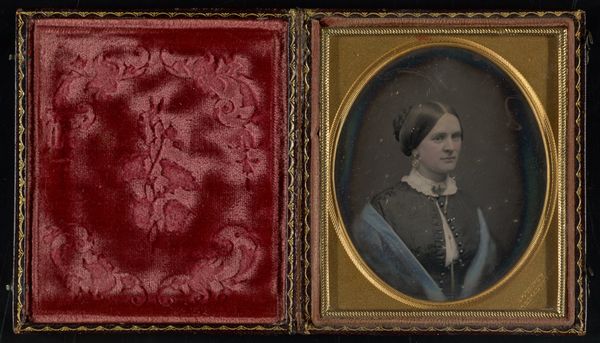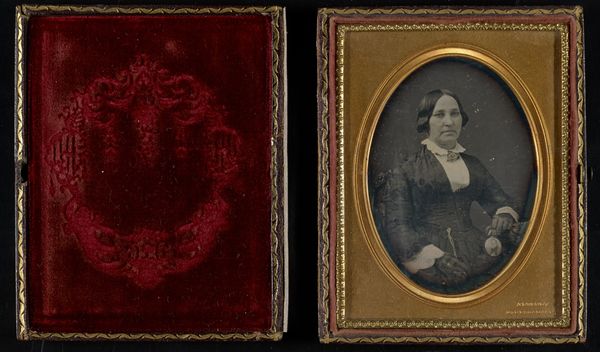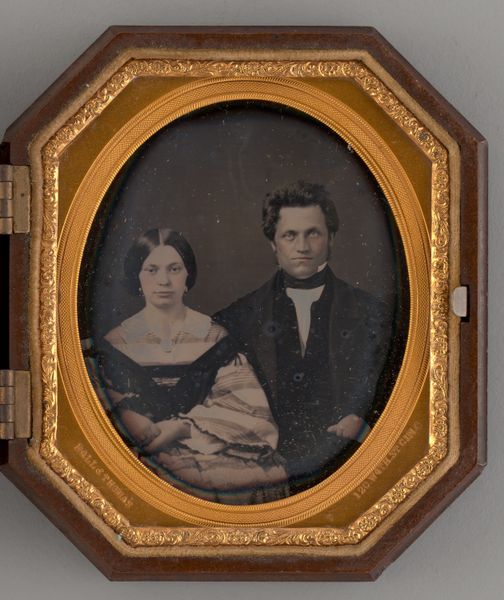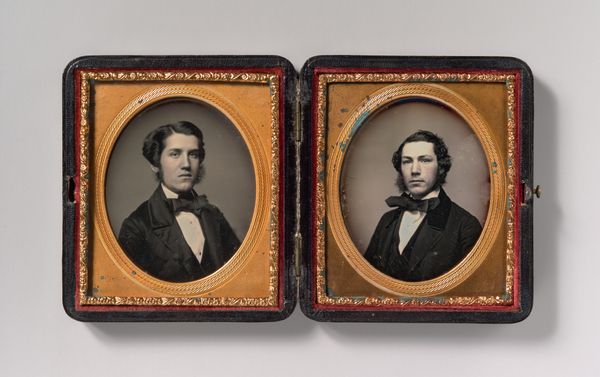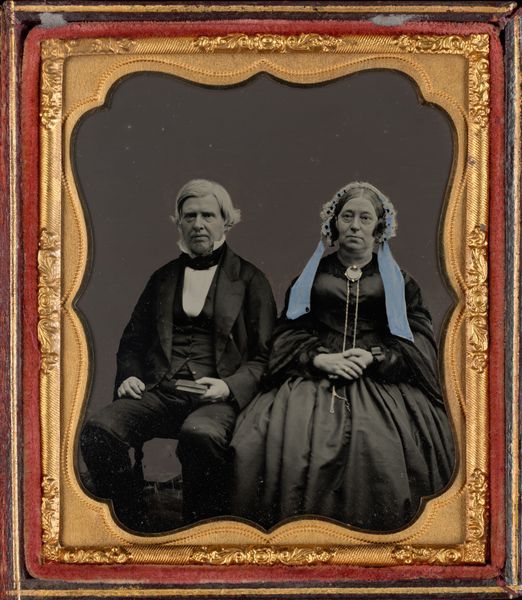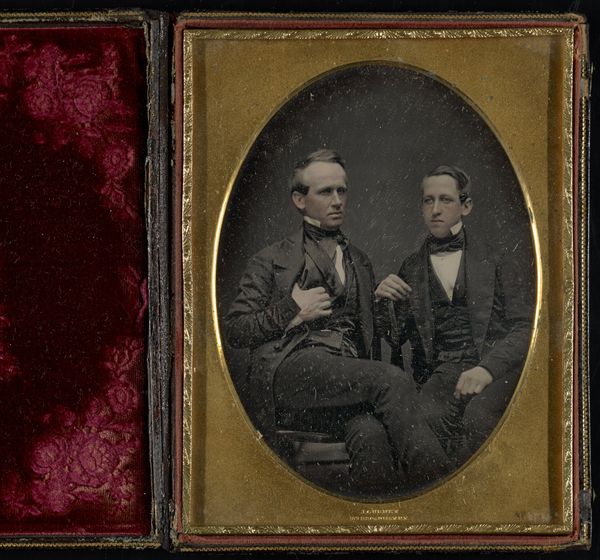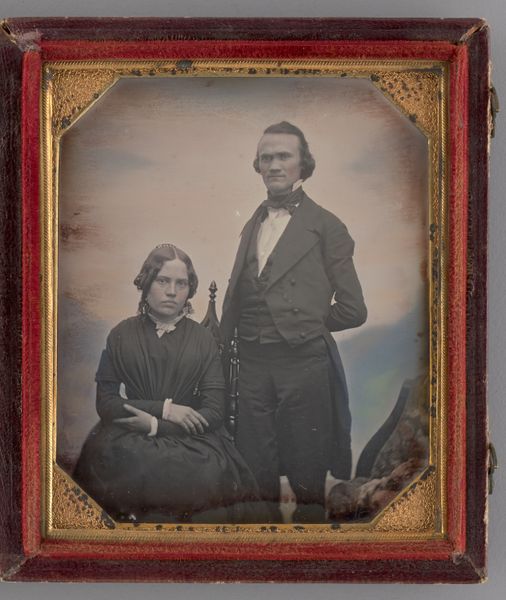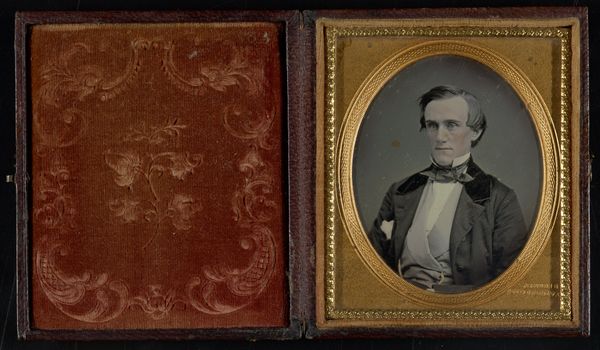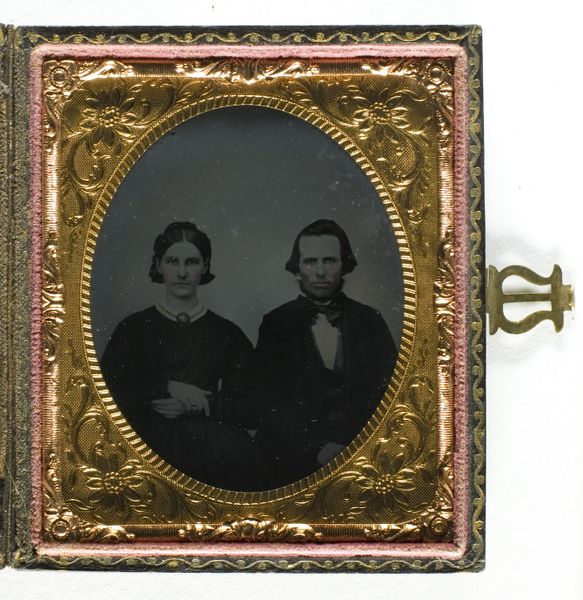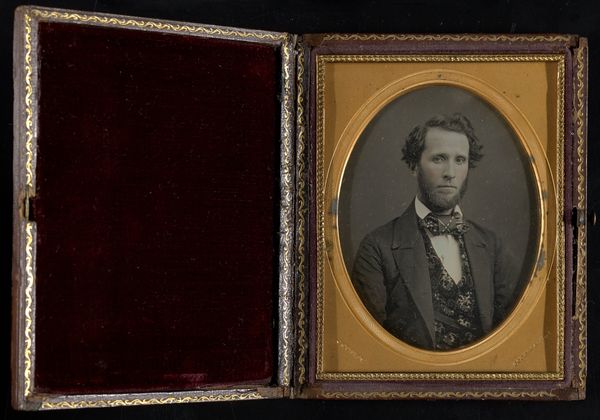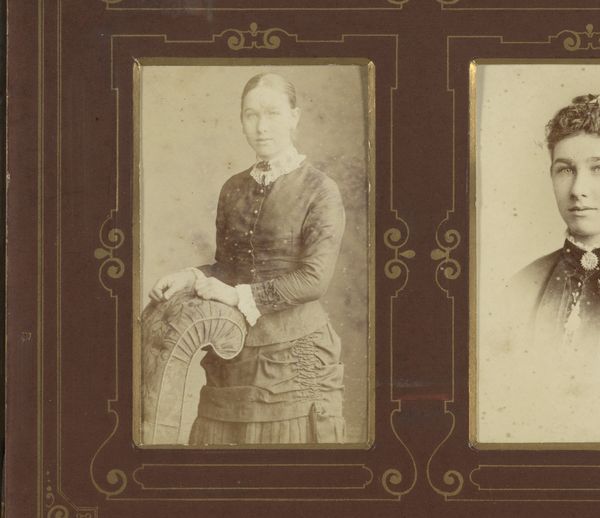
photography, gelatin-silver-print, albumen-print
#
portrait
#
photography
#
gelatin-silver-print
#
albumen-print
Dimensions: 2 1/2 x 2 in. (6.35 x 5.08 cm) (image, each)2 13/16 x 2 3/8 x 5/8 in. (7.14 x 6.03 x 1.59 cm) (mount)
Copyright: Public Domain
Editor: This is an untitled double portrait by Jeremiah Gurney, likely made between 1852 and 1858. It combines albumen and gelatin silver prints. The ornate frames are what catch my eye. What can you tell me about its creation and context? Curator: Considering a materialist approach, the very act of creating these images – the specific gelatin-silver and albumen processes – speaks volumes. Think about the labor involved in preparing these light-sensitive materials. The photographic process itself wasn't easily accessible then; these portraits represented a significant investment. Do you think that economic element affects how we view these people and how they saw themselves? Editor: Absolutely. There's a formality to it. It speaks to the growing middle class, their desire to mark their place through this new technology, but it also seems restrictive given the long exposure times and the limitations in movement and pose. Curator: Precisely. And the frame too: not just a gilded surround but a constructed object itself, implying luxury. How does its material presence and presentation further reinforce ideas about labor, wealth and social class? Editor: The craftsmanship of the frame adds a layer of value. I suppose in that time, they wouldn’t have necessarily been thinking about "high art" versus "craft," as those weren’t the same kinds of distinctions that we make today. These portraits operate more as objects of aspiration. Curator: Exactly. The photographic chemicals, the metal salts used to fix the images, the gilding of the frame: each of these tells a story about access to resources and a developing industrial infrastructure in the 19th century. Thinking about this shifts the image from individual likeness to a commentary on industrial processes, labor, and class expression. Editor: So instead of thinking about just who these people are, we consider what it meant to even have this photograph taken? I never considered how the physical properties could speak so clearly. Curator: Precisely. By examining the materials and modes of production, we uncover a wealth of information about the society that created and valued these images. Editor: Thanks! That gives me a fresh view of early photography.
Comments
No comments
Be the first to comment and join the conversation on the ultimate creative platform.
